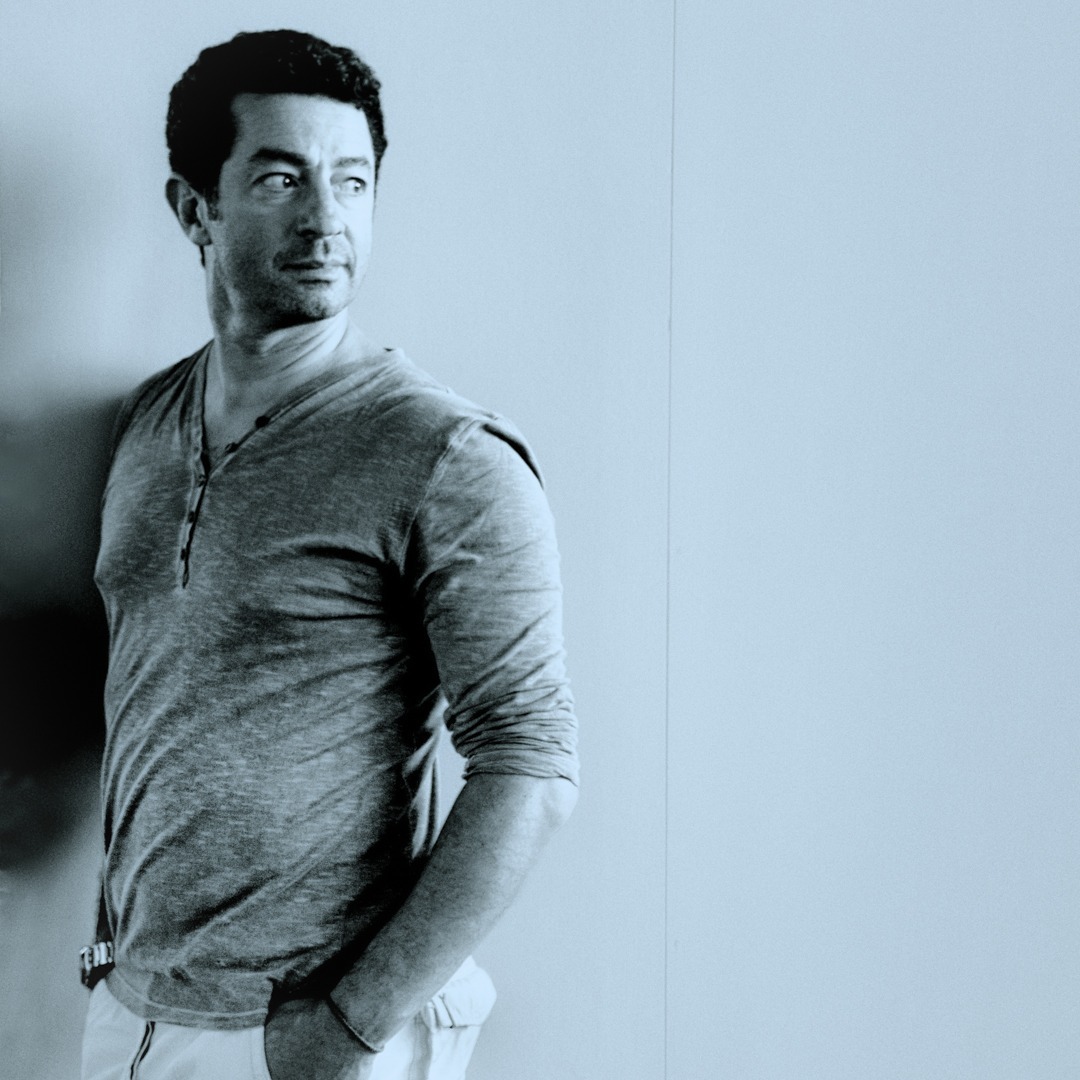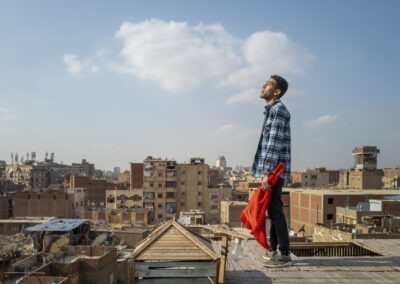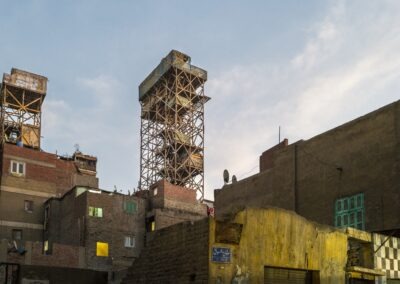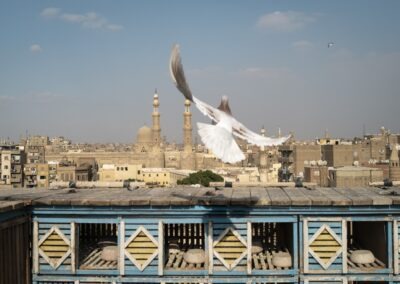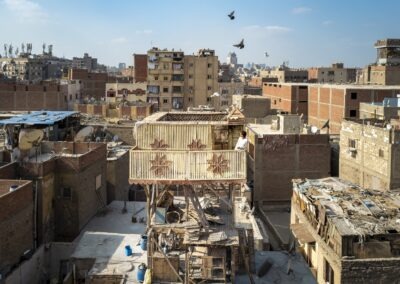Arié Botbol « Gheya from Cairo, the Feathers of Hope »
“I love getting lost in alleyways and paths, searching for unusual scenes of life or landscapes sculpted by light. But what I love most of all is letting myself be surprised by the beauty of the people I encounter in the intimacy of their homes or travels. These fleeting meetings are moments of complicity, shared in the silent consent of the photographed subjects. Men and women who don’t know each other but who are bound by the aesthetics of their solitude. They offer us a moment of introspection, hope, or carefreeness from which a gentle melancholy sometimes emerges.”
Arié Botbol, 58, is an independent photographer currently based in Nice. A street and moment photographer, he loves telling simple stories, creating living atmospheres, and constructing images with rigorous composition. A lover of color and graphic settings, he offers images full of humanity and intimacy.
Born in Morocco, he grew up in Nice, Tel Aviv, Amiens, then 30 years in Paris before returning to settle in the south of France. A graduate of CELSA, after a first career in communications consulting in Paris for 25 years, Arié Botbol now devotes himself exclusively to photography: photo reports for the press, travel documentary photography, corporate and event photography.
He joined the HANS LUCAS agency in 2017 as a photojournalist and has recorded numerous commissions and publications in national and international press. He creates visual campaigns for cultural institutions (Nice Opera) or photo reports for economic actors (RATP, CCI…). He also develops personal artistic work and has produced more than 12 exhibitions in Paris, Geneva, Nice, Lyon, Tangier, and Beirut.
http://www.ariebotbol-photography.com
http://www.instagram.com/ariebotbol
“GHEYA” from Cairo, the Feathers of Hope
When you walk around Cairo and look up at the sky, you can observe poetic choreographies of pigeons flying in groups around surprising wooden towers built on top of the city’s buildings. I wanted to know more, to observe more closely, to meet the people who raise these pigeons to understand the culture.
“Watch them fly, it’s beautiful”: in a country where it’s unwise to speak out about General Sisi’s autocratic power, and where managing to properly feed one’s family has become a daily struggle, I couldn’t help but see in this passion for pigeons the parable of a desire for liberation, for freedom.
It’s a completely transgenerational pastime that occupies the elderly as well as the youngest. Taxi drivers, jewelers, schoolchildren, grocers… all GHAOUI (enthusiasts) of Hamâm (pigeons) who raise dozens of birds in their GHEYA or GHIA (decorated wooden towers built on the roofs of buildings).
Pigeons aren’t the only animals to frequent the city’s heights on rooftop terraces. Poultry, rabbits, sheep, goats, pigs, and even cows are relegated to rooftops when space is lacking at ground level. Indeed, over the past 30 years, Cairo has experienced frantic development: the city’s area has tripled and its population has doubled to reach 23 million inhabitants in 2022.
Cairenes raise pigeons mainly for 3 reasons: for pleasure (called pigeon fancying), out of economic necessity (often a lucrative investment), but also for cuisine (its meat is highly prized).
Pigeon breeding has been practiced for centuries in Egypt, particularly because its meat is renowned: “hamâm mahchi” (squab stuffed with rice) is a sought-after dish, notably for its supposed aphrodisiac properties. While raising pigeons is relatively inexpensive, it can also prove lucrative for a connoisseur. It costs about a hundred pounds per week (around 4 euros) to feed fifty pigeons. Every Friday, a dense crowd jostles through the narrow alleys of the Al Sayeda animal market to buy or sell their champions. (Prices vary from 30 to 1,500 pounds depending on the breed, plumage color, or endurance).
A passion deeply rooted in Egyptian culture. Pigeons are also the subject of competitions in Egypt. Daily releases are accompanied by games: breeders fly their pigeons hoping to bring birds back to their dovecote. The opponent then tries, sometimes for a ransom, to recover the birds equipped with bands indicating their birth dates and the owner’s contact information.
Photography and text: Arié Botbol – Hans Lucas Agency, created in Dec. 2022.

